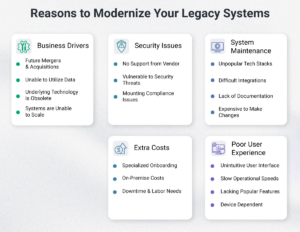
Here is an anecdote, most parents would relate to: A colleague of mine said her 3-year old is quite easy to manage, as the boy can spend hours talking to Alexa, while mom finishes her chores or works from home. My colleague also noticed that the little one has developed a close bond with Alexa because, overtime, Alexa’s responses to the boy got better and more personalised.
This is a simple way AI application is becoming part of our daily life fabric – effortlessly augmenting, if not replacing human need for another human to perform certain tasks. Nearly 77 percent of devices today use AI technology in one form or another. Forecasts indicate that there will be 8.4 billion AI-powered digital voice assistant units in the world by 2024, which surpasses the total global population. Services and solutions leveraging AI, such as virtual assistants, chatbots, facial recognition systems, voice search, and self-driving vehicles, are no longer only in Isaac Asimov novels but in all walks of our life.
Insurance, traditionally has been an industry that has been a laggard in adoption of technology. Moving away from their erstwhile monolith platforms / systems into Cloud-native agile-born Apps has been a slow but steady move in Insurance sector today. However, with so many headwinds blowing against the sector, is the current rate of adoption of technology enough?
Headwinds in Insurance sector:
Association of British Insurers (ABI) has conducted an analysis of 28 million policies in Car insurance and said the average premium across the industry in the three months ending June 2023 was £511 – 21% higher than the same period last year. Most Motor insurers have hiked prices by 15-20% in H1 of 2023. Inflation across most countries has been one of the biggest economic challenges for Insurers since H2 2022. Climate change and extreme weather in Europe, monsoons in Asia are impacting existing Risk assessment and Pricing models for General Insurance. Longevity, as an impact of better wellbeing in the past few decades has meant that Life, Pension insurers have had to innovate their product set. Shifting needs of the consumer owing to Digital convenience means Insurers are having to spend more to cater to a differential multi-channel engagement with their Customers. Insurers today are having to focus on Risk avoidance rather than Risk mitigation as a cornerstone of their strategy.
Top 3 areas of AI/ML/NLP investments by most Insurers:
While adopting and adapting to emergent technology to serve Customers better is key, AI has a potential to impact the balance sheet is more ways than better experience.
Hyperpersonalisation: Today, HR firms in organisations know far more about their employees than some of Insurers know about their consumers – which shows the extent to which shirt-sizing product sets to consumers is few miles away. Insurance is all about understanding Data and drawing insights about their consumers and risk exposure on certain events. AI and Machine learning, with the use of big data, analytics, individual journey maps, and personalized content, hyper-personalized experiences help attract customers, drive profits, and reduce costs. Ongoing efforts to better segment customers are useful but AI is more effective at responding to changes in a consumers behaviour quickly.
Underwriting and pricing: AI models allow for more precise prediction of loss propensity and more granular pricing models by coverage, market segment, industry or geography. By leveraging existing data sets, AI can predict potential problems, identify and assess risk better and help in building Climate risk models. Gathering data points from different sources about a prospect or existing Customer and fine tuning their risk exposure, helping personalised pricing for particular consumers.
Claims: The most impact that an Insurer has on its consumers is through how they process claims. Infact 87% of consumers say that effectiveness of Claims processing influences their decision on choosing their Insurer. The fundamental idea of using AI is to assess Risk and score based on the probability of the Risk-occurrence – lesser probability Risks could be auto-processed by ML, while the others involve humans intervening. Most Insurers today are looking to automate data capturing and FNOL with NLP – using technology like OCR or Conversational systems. For Personal and Commercial Insurers, geospatial information systems like Drones and Computer vision technics are speeding up Claims adjustments.
Given the spread of opportunities in Insurance sector that AI can reimagine, surely this could be the inflection point for innovation in Insurance sector.
- SEO Powered Content & PR Distribution. Get Amplified Today.
- PlatoData.Network Vertical Generative Ai. Empower Yourself. Access Here.
- PlatoAiStream. Web3 Intelligence. Knowledge Amplified. Access Here.
- PlatoESG. Automotive / EVs, Carbon, CleanTech, Energy, Environment, Solar, Waste Management. Access Here.
- PlatoHealth. Biotech and Clinical Trials Intelligence. Access Here.
- ChartPrime. Elevate your Trading Game with ChartPrime. Access Here.
- BlockOffsets. Modernizing Environmental Offset Ownership. Access Here.
- Source: https://www.finextra.com/blogposting/24782/will-ai-be-the-inflection-point-for-innovation-in-insurance?utm_medium=rssfinextra&utm_source=finextrablogs
- :has
- :is
- :not
- $UP
- 2022
- 2023
- 2024
- 28
- 77
- 8
- a
- About
- across
- adjustments
- Adopting
- Adoption
- against
- AI
- AI models
- AI-powered
- Alexa
- All
- allow
- also
- an
- analysis
- analytics
- and
- Another
- Application
- apps
- ARE
- areas
- AS
- asia
- assess
- assessment
- Assistant
- assistants
- At
- attract
- automate
- average
- away
- Balance
- Balance Sheet
- based
- BE
- because
- becoming
- been
- Better
- Big
- Big Data
- Biggest
- Billion
- Blowing
- bond
- British
- Building
- but
- by
- CAN
- Capturing
- car
- cater
- certain
- challenges
- change
- Changes
- chatbots
- choosing
- claims
- Climate
- Climate change
- Close
- colleague
- commercial
- computer
- Computer Vision
- conducted
- consumer
- Consumers
- content
- convenience
- conversational
- cornerstone
- Costs
- could
- countries
- coverage
- Current
- customer
- Customers
- daily
- data
- data points
- data sets
- decades
- decision
- developed
- Devices
- different
- digital
- drawing
- drive
- Drones
- easy
- Economic
- Effective
- effectiveness
- effortlessly
- efforts
- employees
- ending
- engagement
- enough
- Europe
- events
- existing
- experience
- Experiences
- Exposure
- extreme
- fabric
- facial
- facial recognition
- far
- few
- fine
- Finextra
- firms
- Focus
- For
- forecasts
- form
- from
- fundamental
- gathering
- General
- geography
- Global
- had
- Have
- having
- headwinds
- help
- helping
- her
- higher
- Home
- HOURS
- How
- However
- hr
- HTTPS
- human
- Humans
- idea
- identify
- if
- Impact
- impacting
- in
- indicate
- individual
- industry
- inflation
- Inflection
- Inflection Point
- information
- Information Systems
- innovate
- Innovation
- insights
- insurance
- intervening
- into
- Investments
- involve
- ITS
- journey
- jpg
- june
- Key
- Know
- Last
- Last Year
- learning
- lesser
- leveraging
- Life
- like
- little
- longer
- longevity
- looking
- loss
- machine
- machine learning
- manage
- many
- Maps
- Market
- means
- meant
- million
- mitigation
- ML
- models
- mom
- months
- more
- most
- Motor
- move
- moving
- my
- Need
- needs
- nlp
- no
- OCR
- of
- Old
- on
- ONE
- ongoing
- only
- opportunities
- or
- Organisations
- Others
- our
- parents
- part
- particular
- past
- pension
- percent
- Perform
- period
- personal
- Personalised
- Personalized
- Platforms
- plato
- Plato Data Intelligence
- PlatoData
- Point
- points
- policies
- population
- potential
- precise
- predict
- prediction
- Premium
- Prices
- pricing
- problems
- process
- processing
- Product
- profits
- prospect
- quickly
- Rate
- rather
- recognition
- reduce
- responding
- responses
- Risk
- risk assessment
- risk models
- risks
- Said
- same
- say
- score
- Search
- sector
- segment
- self-driving
- serve
- Services
- set
- Sets
- sheet
- SHIFTING
- Shows
- Simple
- since
- slow
- So
- Solutions
- some
- Sources
- spend
- spread
- steady
- Strategy
- such
- surely
- Systems
- talking
- tasks
- Technology
- than
- that
- The
- the world
- their
- There.
- they
- this
- three
- Through
- to
- today
- Total
- traditionally
- understanding
- units
- use
- using
- Vehicles
- Virtual
- vision
- Voice
- was
- Way..
- ways
- Weather
- wellbeing
- which
- while
- will
- with
- works
- world
- would
- year
- zephyrnet











